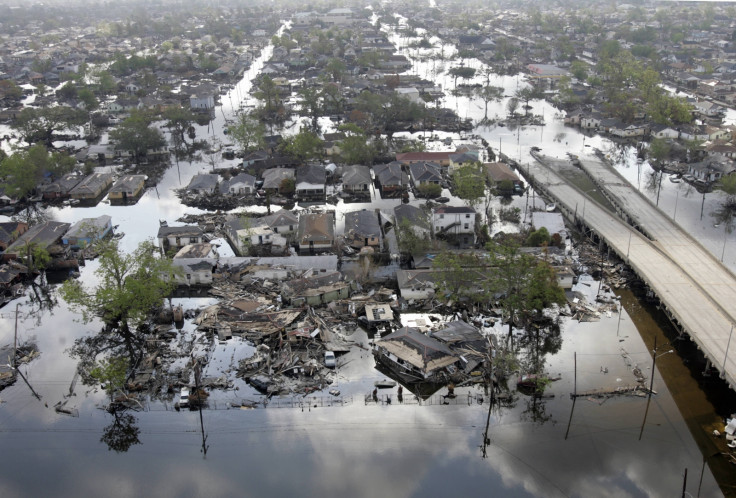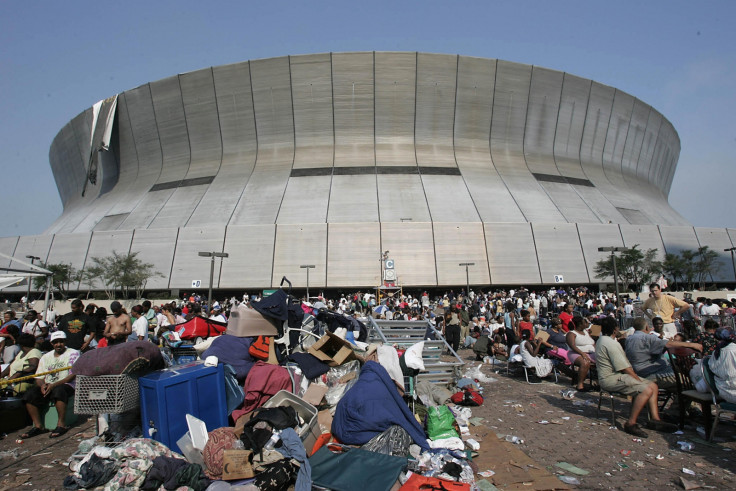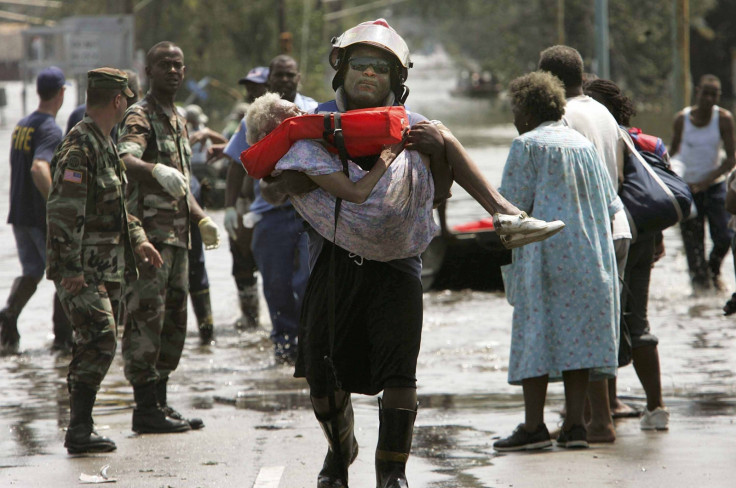Hurricane Katrina 10 years on: Why was it so destructive?

Houses marked with an X still lie deserted in the most impoverished areas of New Orleans, 10 years on from the day Hurricane Katrina hit the city. One of the deadliest hurricanes to ever strike the United States, more than 1,800 people died in the storm and the flooding that followed, and more than a million people were left homeless in the Gulf Coast region.
Katrina formed over the Bahamas on 23 August 2005 as a tropical depression, growing into a category one hurricane by the time it reached Florida but weakening to a tropical storm once again. On 26 August, as Katrina moved over the Gulf of Mexico, its winds increased to 120kmh and it was upgraded back to a category one.
A state of emergency was declared in Louisiana when the National Hurricane Center estimated Katrina's track could shift from the Florida panhandle to the Mississippi and Louisiana coastlines. Katrina made landfall as a category three hurricane with 204kmh winds between Grand Isle, Louisiana and the mouth of the Mississippi River around 6am local time.
The hurricane devastated the cities of Gulfport and Biloxi, in Mississippi, and the Gulf Coast of the state suffered near-total devastation on 28 and 29 August. Hurricane winds, storm surges and sea waves more than 17m high slammed into the coast, before Katrina moved across coastal Mississippi and southern Alabama, eventually making landfall in Louisiana. Several levees in New Orleans were breached and the city, of which roughly half stands above sea level, began to flood. It is estimated that more than 80% of the city was under floodwater.
After causing an astounding loss of life and damage to buildings including hospitals, businesses, schools and homes across Louisiana, Mississippi, Georgia, Alabama and the Florida panhandle, Katrina weakened to a tropical storm. The hurricane killed people in all five states, but the overwhelming majority of deaths occurred in Louisiana – around 1,500 of the estimated more than 1,800. So why was Katrina so destructive in New Orleans?
Levees breached
When Katrina moved across the Gulf of Mexico, it was a category five hurricane with winds up to 282kmh – the highest and most dangerous rating on the Saffir-Simpson Hurricane Wind Scale. When it hit land in Louisiana, however, it had reduced to a category three with winds up to 201kmh, which is not the strongest hurricane to ever make landfall (the Great Galveston Hurricane struck the Texan coast in September 1900 as a category four, killing between 8,000 and 12,000 people).
Yet New Orleans and the surrounding area suffered the brunt of Katrina's force. On 29 August, more than half of the 5,729km of levees and flood walls protecting the city and its suburbs were breached, damaged or destroyed, allowing billions of litres of water to engulf the area. The United States Army Corps of Engineers, which had built the levees, said that they were not adequate for the strength of Katrina – but critics blamed the construction of the defences. Engineers who criticised the levees said they were poorly reinforced and built on inadequate land, so when floodwater pushed against them they would give way.
Investigators focused on the 17<sup>th Street and London Avenue canals, where evidence showed they were breached even though water did not flow over their tops – indicating a design flaw. According to reports, other levees around the city were topped by floodwaters first before being breached. A preliminary report released in November 2005 by the University of California, Berkeley and the American Society of Civil Engineers said that many floodwall failures took place where sections joined together.

Poverty
The poverty rate in New Orleans before Katrina was high, which is another contributing factor to the death toll. According to census data, around 28% of residents in the city were living in poverty prior to Katrina. A significant number of poor households did not have a car, making evacuation before the disaster hit much more difficult.
The evacuation plan was based on members of the public having their own means of transport. While the Superdome was declared a last-resort shelter, for many it was the only option. Tens of thousands of displaced people were crowded into the venue – the poorest, mothers with children, the elderly, the disabled and tourists whose hotels had closed were stuck together in the humid heat – surrounded by human waste and drug paraphernalia. There was no sanitation and little power.
African Americans living in New Orleans made up a significant proportion of the hurricane's victims, making up roughly around one in three people who live in the areas hardest hit. According to the US think tank Center on Budget and Policy Priorities, African Americans were especially likely to not have access to a vehicle before the hurricane struck – with 59% of poor black households lacking a car or truck.
Around 40% of the deaths in Louisiana were caused by drowning, followed by injury and trauma. Nearly half of the fatalities in the state were people over the age of 74, according to the Federal Emergency Management Agency. The total damage from Katrina is estimated by the National Oceanic and Atmospheric Administration to be $81bn, in 2005 US dollars.

Overcoming the disaster
New Orleans is still recovering, and while people have moved back into rebuilt areas after the disaster, some of the city remains empty. Much of the Lower Ninth Ward – levelled by the hurricane and floodwaters – remains uninhabited. While the government's Road Home programme handed out $9bn in grants for rebuilding Louisiana homes, thousands have been unable to finish repairing their homes, partly due to contractors taking grants yet failing to finish the work.
But things are gradually turning around, thanks to the input from groups such as Lowernine.org, a non-profit group working towards rebuilding the destroyed Lower Ninth Ward neighbourhood. The Jazz Foundation of America has helped more than 1,000 New Orleans musicians and their families with its Housing and Emergency Assistance programme. While the population of New Orleans fell from around 484,000 in 2000 to an estimated 230,000 post-Katrina, a loss of around half of the city's residents, the population had risen to around 384,000 in 2014.
It is clear the city's recovery is ongoing, but things are progressing – as shown by the city's growing tourism economy. In 2006, 3.7 million tourists visited New Orleans, but in 2014, the number rose to 9.5 million. The French Quarter has been repaired and the city boasts hundreds of hotels and vibrant restaurants selling local Creole and Cajun delicacies. The scars Katrina left behind are still visible, but life is slowly returning to normal.
© Copyright IBTimes 2025. All rights reserved.




















